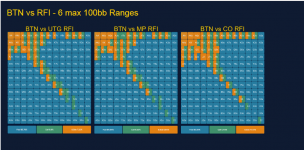christovam
Legend
Platinum Level
I recently read an article about poker and it contained the following lesson:
Aggressive plays with low pairs in poker, especially in Texas Hold'em, can be an effective strategy, but should be used with care due to the vulnerability of these pairs in various situations.
When playing Pre-Flop, you need controlled aggression. On the open-raise, making an initial raise with low pairs (such as 2-2 to 6-6) can be an aggressive move to try to win the pot immediately or establish control over the hand. This is especially effective in late positions (such as cut-off or button), where there are fewer players after you who may have a strong hand.
In Re-Raise (3-bet), re-raising against a player who opened with a raise can work as a semi-bluff. This can cause the opponent to fold better hands (such as high cards that don't connect on the flop).
How do you do this in rooms where there are crazy players who don't analyze poker?
Aggressive plays with low pairs in poker, especially in Texas Hold'em, can be an effective strategy, but should be used with care due to the vulnerability of these pairs in various situations.
When playing Pre-Flop, you need controlled aggression. On the open-raise, making an initial raise with low pairs (such as 2-2 to 6-6) can be an aggressive move to try to win the pot immediately or establish control over the hand. This is especially effective in late positions (such as cut-off or button), where there are fewer players after you who may have a strong hand.
In Re-Raise (3-bet), re-raising against a player who opened with a raise can work as a semi-bluff. This can cause the opponent to fold better hands (such as high cards that don't connect on the flop).
How do you do this in rooms where there are crazy players who don't analyze poker?












